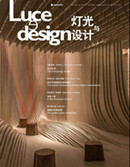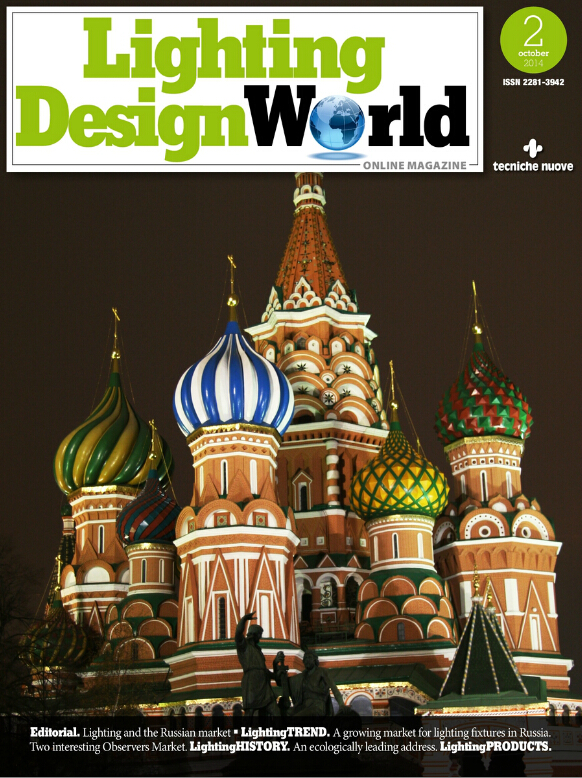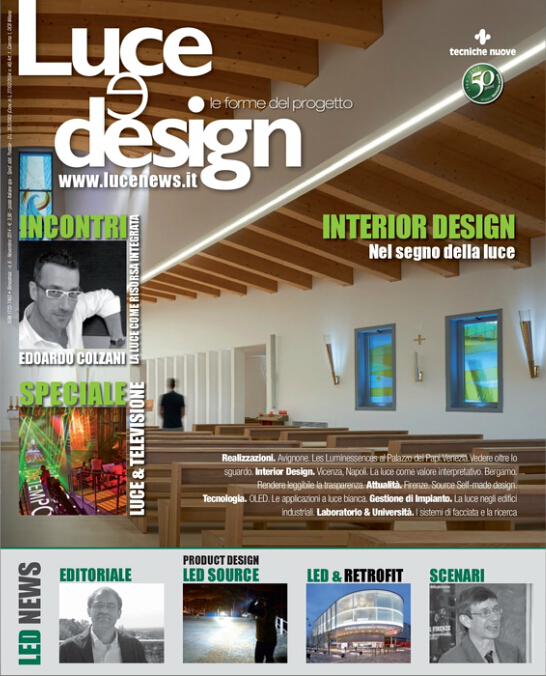人与环境的关系曾一度被认为是直接和自发的,但现在的变化却超越了人们的认识:从罗马时期、中世纪,文艺复兴以及巴洛克时期的第一个部落村的建立,从工业革命开始这种关系就在不断地变化。所有这些都对灯光产生了影响,并随着社会的变化不断发展
The relationship between an individual and their environment, which used to be direct and spontaneous, has changed beyond recognition: from the creation of the first tribal villages to the founding of cities during the Roman, Medieval, Renaissance and Baroque periods; this relationship has been in a state of constant flux since the age of industrialism. All of this has an effect when it comes to making changes to lighting of a city and keeps up with the needs of an ever-changing society.
文:莫妮卡·佩慈拉
by Monica Pezzella
图1:拉斯维加斯弗里蒙特街
Picture 1: Las Vegas, Fremont Street Experience (1995), a multimedia lighting installation (Jon Jerde Partnership)
设计这个行业,在工业革命时期伴随着第一次大型博览会应运而生,这次博览会是在废除了工会后举办,使生产者、商人和消费者可以直接联系。在1851年伦敦博览会上展示出试验性灯光系统、指示牌和喷泉,这些是由当时最大的生产商制造包括像la Société Anonyme des Hauts-Fourneaux & Fonderies du Val D’Osne、Durenne、Salin 和 Dommartin-le-Franc。第一个关于街道设施贸易的目录册(专注在铁具方面)开始流行,目录册包含了具体的报价和技术介绍,如今这些被称之为金沙。罗马大学历史建筑学教授布鲁诺·赛维(Bruno Zevi)在1957年的卢卡市政规划会议中将街道设施引入用语中。但是意大利建筑师Giuseppe Samona1983年在他的一篇关于意大利的未来及与建筑师的关系的论文中,他把街道设施定义为:“一个特殊的问题是物体与空间(像街道和广场)的关系,和粉饰城市关连,当把它们联在一起的统称。”
Design was born during the Industrial Revolution along with the first large exhibitions, which, following the abolition of the guilds, enabled a direct relationship between producers, traders and consumers. At the Great Exhibition in London in 1851, experimental lighting systems, signage, benches and fountains were put on display. They were constructed by the largest foundries of that time, including: la Société Anonyme des Hauts-Fourneaux & Fonderies du Val D’Osne, Durenne, Salin and Dommartin-le-Franc. The first street furniture trade catalogues (in particular iron-furniture), complete with prices and technical descriptions, came into circulation; today these are considered gold dust. The term street-furniture was introduced into common language after its use by Bruno Zevi in the1957 Town Planning Institute (INU) conference in Lucca, Italy. However, it was Giuseppe Samona in his 1983 paper on the future of the Italian city and its relationship with its architecture, who defined it as “a distinctive problem involving the physical relationship between objects in outside spaces (streets and squares) within the patchwork of the city, which together form an often expressive set of icons”.
图2:日本风之塔 – 伊东丰雄的作品
Picture 2: Tokyo, Tower of Winds (1986) by architect Toyo Ito
城市之光
自从第二次世界大战以来,日本城市特别是东京发展的速度非常快。人们见证了高速的城市化。电子通讯和互联网联系催生了城市灯光设计日益完善的发展,灯光设计亦被认为现代电子社会的标志。一个很好的例子是矗立在日本横滨西口火车站的风之塔(包括1280个小灯泡,基座连着12个霓虹圆灯,30个 500个泛光灯在它的底部),风之塔于1986年出自日本建筑师伊东丰雄之手,这座塔曾经是一个蓄水池,之后被改造成一个生动的、充满活力的灯光建筑。白天,它的孔状,铝包层结构反射光,表现为一个简单的循环结构,但设计师说“晚上就变成一个随时变化的万花筒,随着城市的脉搏和节奏而运动。”
同样,拉斯维加斯是世界繁华的缩影,创造力超越了建筑领域的理念,1995年美国捷得国际事务所(Jerde Partnership)设计了繁华的弗里蒙特街:弗里蒙特街(Fremont Street)的体验是技术性和创造性的融合。一个大型购物中心 (30m X 427m),白天可以防太阳光,在晚上,2,100,000支灯泡变成一个巨大的电视屏幕。光释放出它的潜力创造出一个电子的空间:LED灯,扬声器和旋转的镜子,形成一场灯光和音响的盛宴,吸引游客。
图3:艺术家灯光展,蓝色小精灵,Rebecca Horn 作品
Picture 3: Artist’s Lights, 2006. Piccoli Spiriti Blu, an installation for Monte dei Cappuccini by artist Rebecca Horn
意大利
如今的城市,是在经历过几千年的历史之上建立,并受到法律体系的规范(保护艺术和历史的重要性,保护自然之美),任何城市的改变都受到严格控制和监管。虽然有人说意大利是全球一体化的一部分,但是距离像东京和拉斯维加斯这样喧嚣的大都市还有很大距离。意大利因文艺复兴时期的风格严肃的建筑而闻名,然而,一群参与设计佛罗伦萨,最著名的博物馆的灯光和流行艺术的设计师逐渐开始尝试一些有趣的艺术实验;一个裸体妇女和四面鲜艳的美国国旗,在色彩缤纷的灯火下,展示在市民的生活中,为这座古老传统的城市带来了一些后现代气息;这些闪烁绚丽的效果没让人失望。通过淡化一些城市的通俗的照明效果,使光成为一种艺术。尽管我们把艺术同现实区分开,但是可以通过生活的舞台,使人们可以体会并观察现代都市的喧嚣和混乱。
City of Light
Since World War II, Japanese cities, in particular Tokyo, have developed in an extraordinary manner. Here, the effects of urbanism can be witnessed in their extreme. The age of electronic communication and the internet have led to the implementation of urban lighting designs that fly the flag for the modern electronic society. An example of this is the Tower of Winds (consisting of 1280 little lamps, twelve neon rings with thirty 500 W floodlights at its base) in the centre of Yokohama’s Nishi-guchi train station. The Tower of the Winds, built in 1986 by Toyo Ito, used to be a concrete reservoir for water and has been transformed into a lively and vibrant lighting sculpture. During the day, its perforated, aluminium cladding reflects the light and it appears as a simple circular structure, while “at night it becomes a kaleidoscope that reacts to movement, moving in time with the pulse and rhythm of the city”, says its designer. Likewise, in the transient microcosm of Las Vegas, where creativity goes beyond the realms of architectural rationale, an installation by the Jerde Partnership in has graced the busy Fremont Street since 1995: the Fremont Street Experience embodies both creative talent and technology. A large mall (30m X 427m), during the day it is used for protection against the sun’s rays while, when night falls, with the activation of 2.1 million lights it becomes a giant television screen. Here, light unleashes its potential and creates a space using electricity: LED lights, speakers and rotating mirrors, which, through a veritable feast of lighting and sound, captivate its visitors.
In Italy
Today’s cities with their layers of history built up over the past millennium, are regulated by a complex legal system (“Protection of artefacts of artistic and historical importance” and “Protection of natural beauty”), which regulates changes made within a city by enforcing strict controls. It could also be said that Italian cities, although part of the globalisation process, are a far cry from the modern chaos of Tokyo and Las Vegas. Nevertheless, interesting artistic experiments have been carried out by a group of young Florentines who projected lights and pop art onto Florence’s most famous monuments; a city famous for its strictly Renaissance architecture. A naked woman and four American flags projected in bright colours brought a post-modern effect to the traditional architecture; the dazzling effect on its residents was far from disappointing. By toning down the lighting style from the gaudiness of far-flung cities, it can become an art form, an installation. Although we see it as separate from our own reality, it can be used to create a real-life stage in which the actors and audience can step back and observe the bustle and chaos of modern city life.
图4:米兰灯光展,喷泉效果图
Picture 4: Milan Light Exhibition Design (LED), the fountain
临时安装
米兰LED 灯展示设计
圣玛丽亚教堂的直棂窗
设计理念
直到几年前,白天可以看到美丽的建筑,但一到晚上,就变成了单调,黯淡的夜晚。如今,通过透彻地了解照明系统,以及一些高质量的电源配备,能够为圣玛丽亚教堂提供优雅的灯光,点亮教堂的窗棂。灯光勾勒出建筑物的结构并且为街道提供功能性照明。教堂采用这样的灯光设计,是因为它的尖顶的窗棂和玫瑰花形设计简单——可以引入光的定义-同教堂的整体结合,让游客从角落和缝隙可以有一个新的视角。
设计:白光还是彩色光?
图5、6:设计灵活的 LED 灯条嵌入铝合金,牢固地安装在教堂的直棂窗上,点亮窗棂
Picture 5,6: A flexible LED strip embedded in aluminium and secured to the grate of the mullioned windows, lighting up the windows
教堂是文艺复兴时期建筑的融合,在白天,采光和通风都非常好,这促使设计师 Annia Codarrit 想办法让它在夜晚也能引起人们的注意。点亮教堂的窗棂和玫瑰花形结构(意大利伦巴第习惯专注于建筑物本身),设计师选择自然色调的白光,色温在4100-4200K 之间,设计灵活的 LED 灯条嵌入铝合金,牢固地安装在窗棂上,灯光投射到建筑物上,带出装饰华丽窗棂,而要玻璃窗户却处于黑暗之中。有必要用带有稳定色温的LED避免出现白黄,白绿和冷白等颜色。在铝条上安装了色温是4100K 的白色、 流线型 IP67 14.4 W/m LED,这样建筑物砖砌结构和墙体都不会被损坏。窗棂和花形结构也被分别照亮。
Temporary Installation
Milan LED lighting exhibition design
The mullioned windows of Holy Mary of Grace church
The design concept
Until a few years ago, it was normal to see beautiful architecture during the day but at night it would become monotone and fade into darkness. Now, through a greater understanding of lighting systems, along with high-quality power supply units, it has became possible to light up the elegant, mullioned windows of the Santa Maria delle Grazie church. The lighting outlines the brickwork of the building and functions as lighting for the city’s streets. This building was chosen for the installation of the lighting system because Guiniforte Solari’s ogival mullioned windows and rosette shapes are simple forms that – brought into definition by the light – can integrate with the overall architecture of the church, allowing visitors a fresh view of its nooks and crannies.
The design: white or coloured light?
The harmony of the church’s Renaissance architecture, which by day has a light and airy feel, led the designer Annia Codarri to devise a way for it to be appreciated at night.
To light up the mullioned windows and rosettes of Santa Maria delle Grazie (the Lombard’s traditionally focused on brickwork), the designer would need to opt for natural tones of white light, with a colour temperature of 4100-4200K.
A flexible LED strip embedded in aluminium and secured to the grate of the mullioned windows, casts light on its brickwork, highlighting the ornate cornices while leaving the glass windows in darkness. It was necessary to use LEDs with a constant colour temperature to avoid the risk of “white-yellow”, ”white-green” and “cool white” colours. An aluminium strip houses a strip of white 4100K linear fixture IP67 LEDs of 14.4 W/m and thin transparent stays will be used to fix them in place. In this way, the brickwork and walls do not get damaged. The mullioned windows and rosettes are lit up separately.
图7:直棂窗的平面图
Picture 7: The floor plan of the mullioned window
固定安装
米兰 LED 灯展示设计
米兰中央火车站“连接传统与现代灯光的桥梁”
米兰的中央火车站的正面,体现了灯光设计的效果,它结合了自由与装饰艺术元素,整体外观长200m 长,高72m。其华丽的建筑丰富值得一提,光影微妙的结合,通过不同的色彩和色温,建筑物呈现出一种神秘的美,同时为周围营造出一种欢乐的氛围。照亮火车站的正面,描绘这座城市的工业历史,将激情和梦想注入生活,能够让米兰人精神振奋,通过灯光来表达一种优雅和雅致的感觉,这同法国灯光设计是 Alain Guilhot’s 的理念是一致的。
设计
照亮 Ulysses Stacchini’ 体现了目前可持续性的趋势,目的是用低能耗的 LED 系统,不需要特别维护,但可以提供丰富多彩的颜色投射在火车站的正面。
Permanent Installation
Milan LED lighting exhibition design
The Central station “Gateways of light between tradition and modernity”
The aim of the intervention
The facade of Milan’s Central Station, a display of eclectic architecture that combines elements of Liberty and Art Deco, is 200 m long and 72 m high. Its ornate architectural richness deserves to be highlighted; a subtle interplay of light and shadow, created through a broad range of chromatic tones and colour temperatures, reveals the building’s mysterious beauty to its fullest potential while bringing an atmosphere of conviviality to the adjoining area. The illumination of the facade aimed to evoke the spirit of Milan, portraying its industrial history and bringing emotion and dreams to life. It was necessary for the lighting to convey a sense of elegance and refinement, something which was integral to the French lighting designer, Alain Guilhot’s concept.
The design
The lighting up of Ulysses Stacchini’s architecture is part of the current trend for sustainability. The aim therefore was to use a low energy LED lighting system, which does not require special maintenance but enables a variation of colour to be projected onto the facade.
图8、9:中央车站夜景照明图
Picture 8,9: Image showing the lighting of facade of the station at night
项目信息 Project information
项目名称 Project Name:中央车站 Central Station
照明设计师 Lighting designer:Alain Guilhot
照明技术供应商Technical lighting design partner:飞利浦 Philips Lighting
官方合作伙伴 Institutional partner: Fondazione AEM_A2A
安装
米兰 LED 灯展示设计
圣凡德利广场
设计理念
为了使人们的目光集中到 LED 装饰的秋千,秋千设计得又高又长,安装了四个秋千,其中双人秋千的扶手合在一起是个“爱(LOVE)”字,一个单人秋千的扶手构成英文“站立(STAND)”的意思,还有一个单独的秋千和一个儿童秋千。
这个理念源于想设计创造一个互动装置,这样成人和儿童可以同时娱乐,享受飞翔的感觉,人们可以感觉到一种从米兰的喧嚣和快节奏中摆脱的自由,(特别是在圣诞节期间),得到片刻的宁静,缓减压力。由于这个原因,所以会选择安静的地方,营造一种平和宁静的氛围和解脱的感觉。从建筑学上讲,秋千的高度和技术需要确保安全,因为在广场的地面上打钻是不大可能的。
将这个理念变为可行的,是一位才华横溢的铁匠,他将管的直径由之前的70厘米变为30厘米,这样可以让秋千的重量减轻。在结构的稳定性方面,在秋千两侧的外围注入沙土稳固根基。整个结构特别选择按照RAL (卡尔色卡)来涂颜色以便同教堂的颜色协调。
灯光和产品设计
选择 柔和 LED,这个创新性产品由其是在装饰方面的应用上,将代替过时的霓虹灯系统。对比发现,它易切割和可折叠;容易安装,更重要的是不会发射热量。灯光包括5毫米的LED,按照要求分散安装,最终封装在一个不透明的、椭圆形装置中,虽然光的强度有些低,但光照均匀而且能有霓虹灯的效果。产品寿面长达8万小时(取决于装置的颜色,安装位置和电力供应); 耐冲击,节能70%左右。通过使用这种创新型产品,可以按照设计师的要求再生产秋千以便从每个角度都能看到它;这是因为秋千不适合安装在建筑物正前方而是要旋转35°。
还有是把秋千的其中两个安装红外线感应,像城市的大门一样。也就是当秋千不用的时候,LED 只发出30%的光,当有人靠近和使用的时候,发光率可以达到100%。
图10、11:用 LED 点亮秋千的两侧扶手
Picture 10,11: LED is used to light up the wings of the swing
Installation
Milan LED lighting exhibition design
San Fedele plaza
The concept
In order for the eyes to be drawn straight to the LED wings, the swing structure has been made tall and long to keep it fairly invisible. Four different swings have been installed: a double-swing for couples called LOVE, a low, single standing-swing called STAND, a standard single-swing and a lower children’s swing.
The idea stemmed from the desire to create an interactive installation, which could be enjoyed by children and grown-ups alike and give the sensation of flying; a sense of freedom from the chaos and haste of Milan (especially during the Christmas period); somewhere for moment of peace and reflection, far from life’s stresses and strains.
It was precisely for this reason that a “peaceful” and quiet location was chosen, to create a sense of tranquillity and escape.
From a structural point of view, the only issue that arose concerned the height of the swing and the techniques required to make it safe and secure, because it was not possible to drill into the paving of the square.
The swing was made entirely by a talented blacksmith who made it possible for a tube measuring approximately 30 cm in diameter, instead of 70 cm, to be used, which made the swing even lighter. With regard to the stability of the structure, a kind of housing containing sand was created at its two ends to anchor it to the ground. The structure was painted entirely with RAL colours chosen specifically to match the church facade.
Lighting + Product design
Flexo LEDs were used, which is an innovative product used in place of the obsolete range of neon lighting used in many decorative devices.
In comparison, it is much simpler to cut and can be folded tightly; it can be installed rapidly and, most importantly, does not emit heat. The light comprises of 5 mm LEDs, spaced out as required, which are encapsulated in an opaque, oval-shaped sheath, which diffuse the light uniformly and recreate a neon lighting effect, although with a slightly lower intensity. The product lasts approximately 80,000 hours (depending on its colour, location and the power supply unit used); it is resistant to impact and reduces energy consumption by around 70%.
Through the use of this innovative product, it was possible to reproduce the wings in the way that the designers wanted and make them visible from every angle; this is because they were not fitted to the front of the structure but rotated by 35°.
It was also possible to fit two of the four swings with infrared lights, like the gates of a city. This means that when the swing is not in use, the LED emits just 30% of its potential light, while when someone approaches it and climbs on, the light output increases to 100%.
图12:秋千两侧扶手的效果图
Picture 12: Lighting of the wings
项目信息 Project information
室内和产品设计师 Interior and Product Designer:Alessandra Reda Veronica
室内设计 Interior Design:Perez Interior Designer
办公室和产品设计师 Office and Product Designer:Susiana Tjiu
SPD – Scuola Politecnica di Design, Milan
技术照明合作商Technical lighting partner:Elinca Innovative Lighting














































